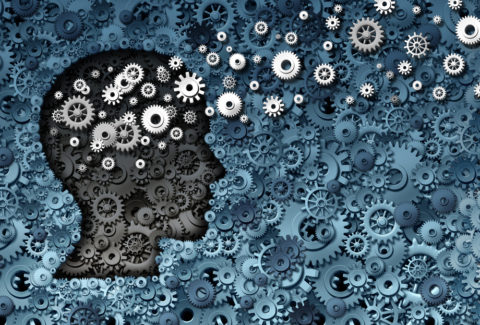Factors Influencing Behavior Change
Behavior change is a complex process influenced by various factors, ranging from individual characteristics to environmental conditions. Understanding these factors is essential for developing effective interventions that promote positive behavior change in individuals and communities. This article explores the key factors that influence behavior change, providing insights into how they can be leveraged to facilitate transformation.
Individual Factors
- Motivation: Motivation is a crucial driver of behavior change. Intrinsic motivation, which comes from within an individual (e.g., personal satisfaction, enjoyment), is often more effective than extrinsic motivation (e.g., rewards, external pressure).[1] Understanding an individual’s motivation can help tailor interventions that resonate with their values and goals.
- Knowledge and Skills: An individual’s level of knowledge and skills directly impacts their ability to change behavior. Providing education and training can empower individuals with the necessary information and competencies to adopt new behaviors.
- Personality Traits: Individual personality traits, such as openness to experience, conscientiousness, and resilience, can influence behavior change.[2] For example, individuals high in conscientiousness may be more likely to set and adhere to goals, while those high in openness may be more willing to try new approaches.
- Emotional State: Emotions[3] can significantly impact behavior change. Positive emotions can enhance motivation and engagement, while negative emotions such as fear or anxiety can hinder progress. Addressing emotional barriers is essential for supporting behavior change.
Social Factors
- Social Support: The presence of supportive relationships can play a vital role in behavior change. Encouragement from family, friends, and peers can increase motivation and accountability, making it easier for individuals to adopt new behaviors.[4]
- Social Norms: Social norms[5] and expectations influence behavior by shaping what is considered acceptable or desirable in a given context. Understanding and leveraging social norms can facilitate behavior change by creating a supportive environment for individuals to engage in desired behaviors.
- Group Dynamics: Group dynamics, such as cohesion and shared goals, can enhance motivation and commitment to behavior change.[6] Participating in groups or communities that promote positive behaviors can foster a sense of belonging and accountability.
Environmental Factors[7]
- Accessibility and Resources: The availability of resources, such as facilities, tools, and information, can significantly impact behavior change. Making resources accessible and easy to use can lower barriers to change and encourage individuals to adopt new behaviors.
- Physical Environment: The physical environment can influence behavior by shaping opportunities for action. For example, a workplace designed to promote physical activity (e.g., stairs, standing desks) can encourage healthier behaviors among employees.
- Policy and Regulation: Policies and regulations can create a framework that supports or hinders behavior change.[8] Implementing policies that encourage positive behaviors (e.g., smoke-free laws, healthy food options) can promote healthier choices at the community level.
Cultural Factors
- Cultural Beliefs and Values: Cultural beliefs[9] and values shape individuals’ perceptions of health and well-being. Understanding cultural contexts is crucial for designing interventions that resonate with specific communities and promote behavior change effectively.
- Traditions and Practices: Cultural traditions and practices can influence behavior by dictating what is considered normal or acceptable. Integrating culturally relevant practices into behavior change initiatives can enhance engagement and effectiveness.
- Language and Communication: Language and communication[10] styles can impact how information is received and understood. Using culturally appropriate language and communication strategies can facilitate understanding and support behavior change.
Psychological Factors
- Cognitive Dissonance: Cognitive dissonance[11] occurs when individuals experience discomfort due to conflicting beliefs or behaviors. Addressing cognitive dissonance can motivate individuals to change their behaviors to align with their beliefs and values.
- Habit Formation: Understanding how habits are formed and maintained is critical for behavior change. Strategies that focus on breaking negative habits and establishing positive ones can enhance long-term success.[12]
- Self-Efficacy: Self-efficacy[13] refers to an individual’s belief in their ability to succeed in specific situations. Higher self-efficacy can lead to greater persistence in overcoming challenges and achieving behavior change.
Conclusion
Behavior change is influenced by a multitude of factors, including individual, social, environmental, cultural, and psychological aspects. By recognizing and addressing these factors, practitioners can develop comprehensive interventions that facilitate positive behavior change in individuals and communities. Ultimately, understanding the complex interplay of these factors can lead to more effective strategies for promoting healthier behaviors and enhancing overall well-being.
[1] Rodgers, Wendy M., and Christina C. Loitz. “The role of motivation in behavior change: how do we encourage our clients to be active?.” ACSM’s Health & Fitness Journal 13.1 (2009): 7-12.
[2] Hudson, Nathan W., and Brent W. Roberts. “Goals to change personality traits: Concurrent links between personality traits, daily behavior, and goals to change oneself.” Journal of Research in Personality 53 (2014): 68-83.
[3] Tamir, Maya, and Tony Gutentag. “Desired emotional states: Their nature, causes, and implications for emotion regulation.” Current Opinion in Psychology 17 (2017): 84-88.
[4] Laranjo, Liliana, et al. “The influence of social networking sites on health behavior change: a systematic review and meta-analysis.” Journal of the American Medical Informatics Association 22.1 (2015): 243-256.
[5] Yamin, Paulius, et al. “Using social norms to change behavior and increase sustainability in the real world: A systematic review of the literature.” Sustainability 11.20 (2019): 5847.
[6] Beauchamp, Mark R., Desmond McEwan, and Colin M. Wierts. “Psychology of Group Dynamics: Key Considerations and Recent Developments.” Handbook of Sport Psychology (2020): 321-343.
[7] Yasunaga, Akitomo, et al. “Individual and environmental factors related to stage of change in exercise behavior: a cross-sectional study of female Japanese undergraduate students.” Journal of Physical Activity and Health 11.1 (2014): 62-67.
[8] McKenzie-Mohr, Doug, and P. Wesley Schultz. “Choosing effective behavior change tools.” Social Marketing Quarterly 20.1 (2014): 35-46.
[9] Quintana, Yuri, and Jennifer McWhirter. “Culturally appropriate behavioral change in maternal health: role of mobile and online technologies over time.” Cognitive Informatics in Health and Biomedicine: Understanding and Modeling Health Behaviors (2017): 217-233.
[10] Adewuyi, Emmanuel Olorunleke, and Kazeem Adefemi. “Behavior change communication using social media: A review.” International Journal of communication and health 9.1 (2016): 109-116.
[11] Wiafe, Isaac, Keiichi Nakata, and Stephen Gulliver. “Categorizing users in behavior change support systems based on cognitive dissonance.” Personal and ubiquitous computing 18 (2014): 1677-1687.
[12] Gardner, Benjamin, and Amanda L. Rebar. “Habit formation and behavior change.” Oxford research encyclopedia of psychology. 2019.
[13] Parschau, Linda, et al. “Positive exercise experience facilitates behavior change via self-efficacy.” Health Education & Behavior 41.4 (2014): 414-422.







